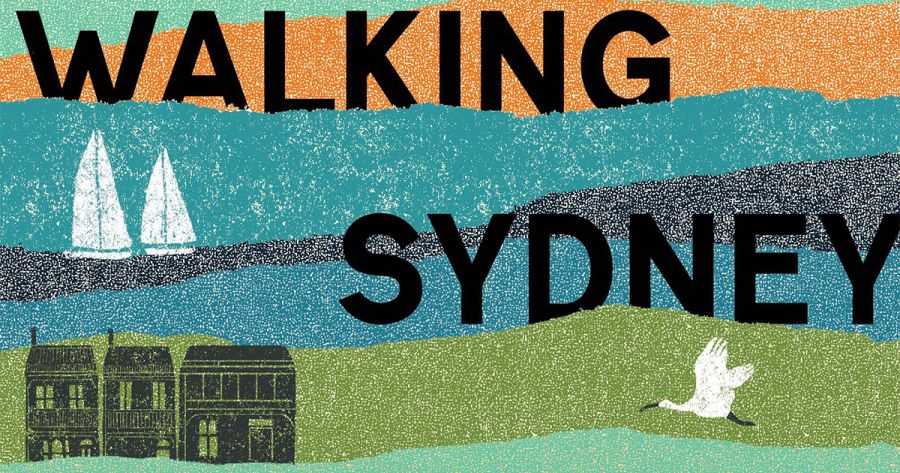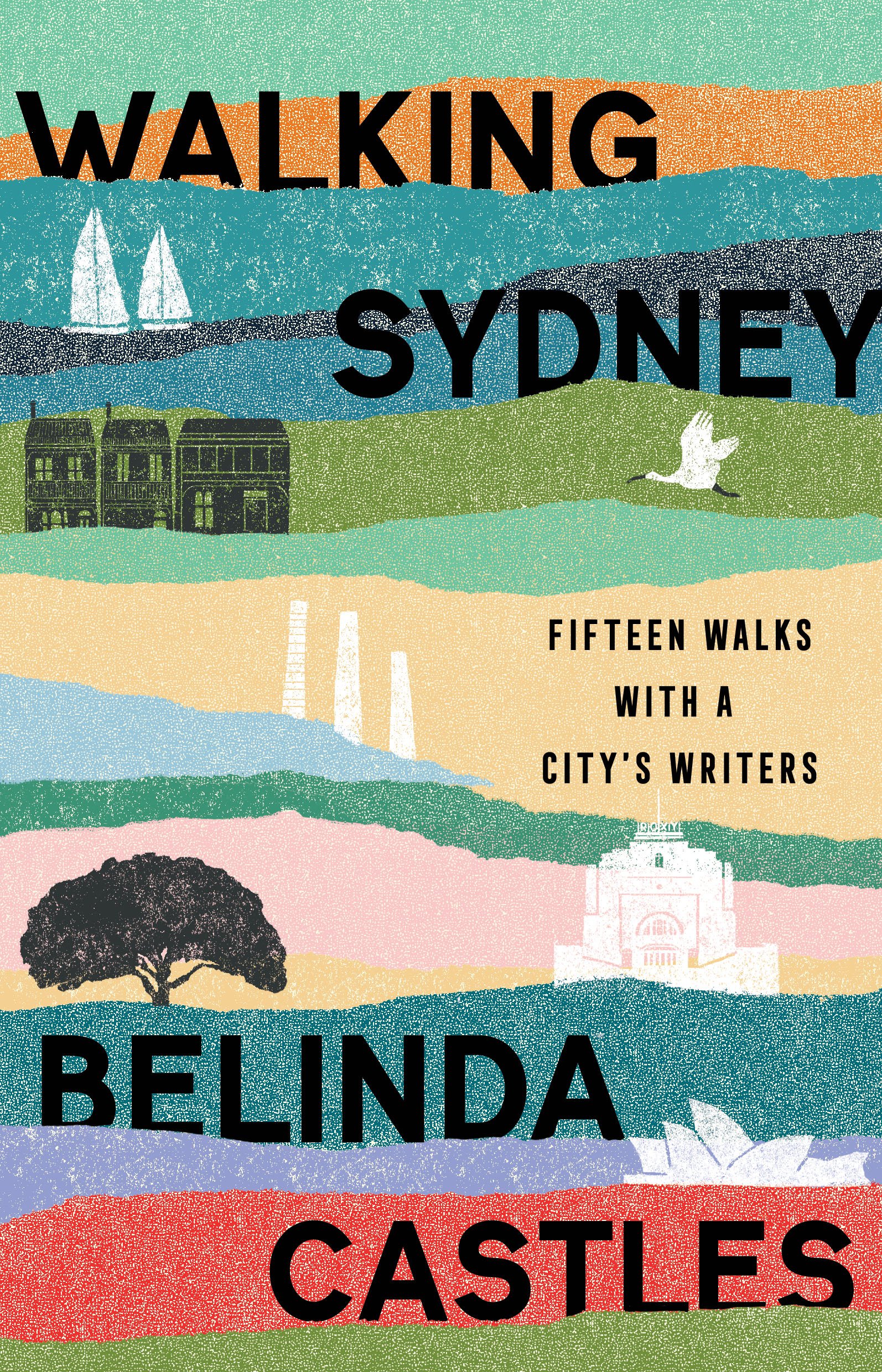
- Free Article: No
- Contents Category: Sydney
- Review Article: Yes
- Article Title: Step count
- Article Subtitle: Sydney, by its writers
- Online Only: No
- Custom Highlight Text:
During the walk she takes with Michelle de Kretser along the Cooks River, the bit that snakes between Hurlstone Park and Tempe, Belinda Castles, the author of Walking Sydney, muses on the impact of Sydney’s geography. ‘On the footpath-climb to skirt the golf course,’ she writes, ‘the village-like nature of Sydney makes itself felt, the way suburbs are enclosed and cut off by ridges and valleys, cliffs and rivers, the tentacles of the harbour. A city’s form has an effect on thinking and ways of being.’
- Book 1 Title: Walking Sydney
- Book 1 Subtitle: Fifteen walks with a city’s writers
- Book 1 Biblio: NewSouth, $34.99 pb, 262 pp
- Book 1 Cover Small (400 x 600):

- Book 1 Cover (800 x 1200):

- Book 1 Readings Link: https://www.readings.com.au/product/9781742237930/walking-sydney--belinda-castles--2025--9781742237930#rac:jokjjzr6ly9m
This thoughtful, generous book proves her point, and then some. I’m Team Sydney, predisposed to love this place, to defend it from accusations that it is shallow, materialistic, sprawling, gentrified, overpriced, and has inferior coffee to Melbourne, even when I can acknowledge that some of those claims might possibly be a little bit true. (Not the coffee one. Don’t @ me.) But when they read this book, even Sydney-sceptics will concur that this is a city that lends itself to metaphor and hyperbole, and is blessed with outstanding writers. Perhaps that is a chicken and egg situation – did the city inspire the writers or do these writers make the city seem so damn interesting? But what writer, in a city that offers so much watery, geological, botanical, and historical inspiration, would eschew its literary possibilities?
Let’s for a moment stay with de Kretser, one of the book’s stellar line up of walker-writers (at times driving is required). At Earlwood she comments, ‘That’s what Sydney seems to me to be, a place of revelations, because of the hills, because of the topography. You don’t know what’s coming. Look at that magnificent sandstone cliff with trees growing out of it. It reminds you that you are living in a natural landscape, even though it’s profoundly urban.’
In the course of recounting fifteen walks taken with writers, Castles draws ever-so-lightly on the work of various cultural theorists to interrogate what ‘psychogeography’ might be, and how it informs her book. Her writing and listening, the places she visits, and the ruminations she draws out, reflect cultural theorist Margaret Cohen’s idea of a ‘Black Guide’, defining the ‘uncanny, the irrational, and the repressed elements of a city’, instead of the touristic ‘Blue Guides’ and plaques. Through such a lens, Cohen argues, might we see ‘into the heart of things’. With each step Castles allows her writers to walk the talk, so to speak.
She has selected a group who are adept at noticing, exceptionally so; that is the job of writers. As she wanders around Yagoona and Bankstown with Castles, Sheila Ngoc Pham quotes Vanessa Berry, who, a couple of chapters earlier, has guided Castles down King Street in Newtown. (I won’t be the only reader who, having not thought for years about Alex Cordobes’s pizza at the northern end of King Street, learns that – surprise, surprise – it is now a Pilates studio.) Berry’s apposite quote conjures the radical potential of ‘taking notice’; it is something that Pham, who moved away from Sydney and came back with her own children, does superbly. Recent history creeps in, particularly in Bankstown, when Pham reminds us of the impact of Covid-19 on the suburb whose residents seemed particularly targeted by lockdowns.
Castles eschews the tropes of the profile feature article – there is no ‘I met Max Easton at Liverpool McDonalds on a windswept day’. Chapters are essentially written in her voice. But the background she shares about her walking companions and their work (each chapter starts with an extract from their published work), as well as the way she integrates their quoted speech, brings the writers, their work, and the places they are describing to life – sometimes the fictional characters they have written about too. There are no maps, no raw demographic statistics, no discussion of Local Government Area policy or real estate prices, except where they pop up in an author’s telling.
Each writer owns their chapter – the quotes, reflections, and personal references are all theirs. Who else but Michael Mohammed Ahmad could reflect on the ‘old’ and the ‘new’ Punchbowl, moving from the anti-Arab, anti-Muslim sentiment prevalent at the turn of the century to become something else, something better. Who else but Max Easton might look up to the new shining towers of Liverpool and say, ‘It feels like the science-fiction version of my childhood’?
Many writers in these pages are ploughing fresh fields in writing about these Sydney places. On the other hand, you can hardly take a step around The Rocks, Kings Cross, Elizabeth Bay, or Surry Hills without running into Ruth Park, Kylie Tennant, or Kenneth Slessor. But when you’re walking alongside Gail Jones, Delia Falconer, Neil Drinnan or Fiona Kelly McGregor, you start seeing these neighbourhoods through their eyes, and their work. Walking down an alleyway behind Buckingham Street in Surry Hills, McGregor is talking about her novel Iris and tells Castles, ‘Here, I’ve got Iris watching for Maisie.’ If I were to walk along the coast from Manly to Freshwater, the suburb formerly known as Harbord, I could not look out to sea without imagining Malcolm Knox there on his surfboard, just as every time I am at Dawes Point near the Sydney Harbour Bridge, I think of Kate Grenville (not in the book, but mentioned) writing about William Dawes, and Patyegarang, his language teacher.
Indigenous past and present are never far away in Sydney. Ngarigu woman Jakelin Troy’s description of the Gadi tree, which gives Gadigal country its name, is a reminder that the original Sydney languages are alive. ‘Because of the way Aboriginal languages work, you wouldn’t name an entire tree … the different parts have different names. Overall it’s the Gadi, but that’s a European way of trying to taxonomise the whole plant.’ Country lives as well. In Wiradjuri poet Jazz Money’s meander around the former Eveleigh railyards, she comments, ‘One of the things I really love is that sense that Country is very present.’ Essayist Eda Gunaydin, walking through Parramatta, remembers that middens were found without digging very deep when PHIVE, the large civic development in Parramatta Square, was built. This is part of the mental geography that we grapple with every time we navigate the overlays of memory and place. And sometimes an important – if easy-to-miss – sign in front of a nondescript building tells an important story. As Euahleyai and Gamillaroi woman Larissa Behrendt walks past the site of the 1938 Day of Mourning, now housing a CBD building, she says, ‘It’s a very famous site that shows the continuation of resistance in this place.’
Walking, without question a central method of perception, becomes even more valuable in a city that is changing all the time. The tour offered by this book will inspire me to step out myself, with new eyes. And an expanded reading list.
One of the book’s many strengths is its rich evocation of places, both familiar and new. Beth Yahp, who happens to be Belinda Castles’s writing colleague at the University of Sydney, says of her Sydney, around Clovelly and Bronte, ‘There’s a hill before you descend to the coast, where the ocean glitters at the end of the road and you know you’re almost home. You’re descending into something else.’


Comments powered by CComment